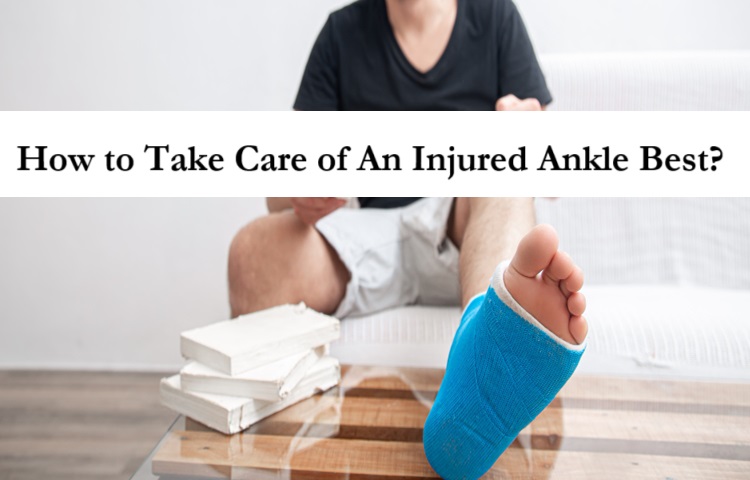Fractures, strains and sprains are three broad categories of ankle injuries. External traumas often lead to such injuries.
Consult the nearest orthopedic doctor as early as possible after an ankle injury. To learn about the most effective first aid and all the treatment options available, read the article below.
Types Of Ankle Injuries
An accident can injure the ankle in several ways as discussed below.
Fractures: Breaks in the bones are called fractures. A trauma can cause damage to ankle bones, leading to severe pain and mobility issues.
Muscle Injuries: Damage to the muscles around the ankle joint is called a muscle injury or strain.
Ligament Injuries: Every joint has ligaments, soft-tissue bands connecting bones to bones. Intense accidents can either stretch such structures or rip them partially or completely. These injuries of ligaments are called sprains.
Tendon Injuries: Like ligaments, there are tendons, which are also soft-tissue bands that connect bones to muscles.
Like a ligament, a tendon can also get damaged due to external trauma in three ways:
- Stretching
- Partial tearing and
- Complete or near complete tearing
Bursitis: A little bag-like structure filled with fluid is also found in joints including the ankle. This structure is called the bursa. When it gets inflamed due to an injury, the condition is called bursitis, which is a medical name for the inflammation of the bursa.
Thus, the nature of an ankle injury depends on the intensity of the trauma and the part affected. Sometimes, trauma is not that intense; thus, it only results in soft-tissue injuries.
However, if an accident is too intense, it often leads to fractures or Grade 3 strains and sprains.
Symptoms
The major symptoms after ankle injuries are as follows.
- Pain
- Swelling
- Redness
- Discomfort
- Immobility
Diagnosis
Doctors use the following imaging tests before treating an ankle injury.
- X-Ray
- MRI
- CT Scan
An X-ray test helps discover bone fractures. However, it cannot show soft-tissue injuries. So, for such injuries, an MRI or a CT scan is used.
The MRI technology depends on magnetic energy to produce images. Thus, it is not good for a patient who already has a metal implant inside the body. Here, the MRI technology can interfere with the metal implant, causing health issues and complications. Thus, a CT scan is recommended in that case.
Visit the following link to book your appointment with the best joint specialist: top 10 orthopedic surgeons in India.
First Aid
Right after an ankle injury, follow the instructions below if possible until you reach a doctor.
Rest: Don’t move the injured ankle a lot. Keep it still in a comfortable position. Moving can make the injury worse.
Apply Ice Packs: Get an ice pack and apply it to the injury. Ice reduces swelling by constricting blood flow. Apply the ice pack to the injury for at least 10-15 minutes at a time. Then, wait for 2-3 hours before applying the ice pack once again.
Use Compression Bandages: Take the compression bandage and wrap it around the injured ankle. However, make sure it is not tight. Keep it well balanced: not too loose and not too tight.
Elevate: Furthermore, lie down on the back and raise the injured ankle at the heart level. You can use a pillow or something else to prop up.
These four instructions are collectively called R.I.C.E in short. These are not to be followed one after the other. Instead, one can use them at the same time. For example, wrap the compression bandage and keep the ankle elevated. At the same time, at frequent intervals, use ice packs. Furthermore, while you apply ice, don’t move your ankle in any uncomfortable way.
Consult An Orthopedic Doctor: If your pain doesn’t go away and persists even on the second or third day, the injury may be severe.
Severe injuries don’t heal themselves over time. They need medical interventions. Thus, at this stage, consult a doctor so that it gets the treatment it needs on time.
To connect with the best doctor, visit the following link: foot and ankle doctor in Delhi.
Treatment
The following are the treatment options for an injured ankle.
Pain Management: To control pain, the doctor can prescribe painkillers. Injections of corticosteroids can also be given as per the doctor’s instructions.
Physiotherapy: Physiotherapy treats an ankle injury by stimulating the body’s healing capacity. As a result, the injured part heals, strengthens and becomes strong enough to withstand a wide range of future traumas.
Physiotherapy mainly comprises special exercises, massages, joint manipulation, use of muscle stimulation devices and stretching exercises.
Activity Modification: Doctors might tell you to introduce modifications in your lifestyle. You will be told not to engage in any form of activity that can make the injury worse.
If walking can stain the injured ankle, you will be recommended to use a walking aid like a pair of crutches or cane or walking stick. The use of assistive devices is also part of activity modification.
Stem Cell Therapy: Under this therapy, stem cells are taken out of the body and injected into the injured part. This therapy promotes the growth and regeneration of injured parts of the tissue.
Platelet-Rich Plasma Therapy: This treatment involves injecting a platelet-rich plasma concentrate directly into the affected ankle. The concentrate is prepared out of the blood of the patient.
This therapy increases the platelet concentration in the injured part. Increased platelet concentration speeds up or boosts the healing capacity of the injured tissue. It is so because platelets contain growth factors that increase cells’ capacity to regenerate to heal an injury.
Surgery: When the injury cannot be treated with the above options, surgery becomes compulsory. Several types of ankle injuries need surgeries. The following are the major ankle surgeries.
- Ankle Fusion
- Ankle Fraction
- Ankle Tendon Repair
- Ankle Ligament Reconstruction
- Ankle Replacement Surgery
These days, most ankle surgeries are done with arthroscopy, which is minimally invasive joint surgery.
Conclusion
The best way to handle an ankle injury is by following R.I.C.E. immediately after the injury. Rest, use ice packs, compress with a bandage and elevate the injured ankle. All of these instructions work on reducing after-injury swelling.
If the injury doesn’t heal and the pain persists, consult a doctor for effective treatment.





